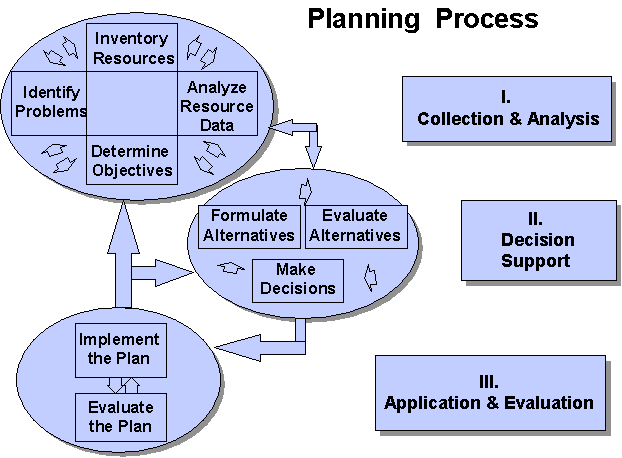Planning is essential both personally and professionally. It helps us achieve our goals, and allows for more efficient use of time and other resources.
Planning means analyzing and studying the objectives, as well as the way in which we will achieve them. It is a method of action to decide what we are going to do and why. For that, we have to create a plan.
Creating a plan
There are many benefits to creating a plan. Above all, it clarifies many doubts about the work to be done.
Creating a plan:
- Defines the need for resources to achieve objectives
- Clarifies the activities and the doubts regarding the objectives sought
- Quantifies performance levels to be successful
- Establishes priorities
- Clarifies weaknesses and strengths to achieve objectives.
 The illustration above is an example of a planning process framework.
The illustration above is an example of a planning process framework.
In the planning process, it is important to:
- Identify the vision, goals or objectives to be achieved
- Formulate the strategies needed to achieve the vision and objectives
- Determine and allocate resources necessary to achieve the vision and objectives
- Set implementation plans to monitor and evaluate progress towards the vision and goals
Among the most important advantages of planning, it helps to improve coordination among the different members of the team. It can also improve the internal vision of the business environment, and help a project team to adapt quickly to the changing environment.
To summarize, we can say that planning is a necessary exercise in order to reduce the risk and organize production in line with the objectives.
In this series, we will explore the different aspects of planning and how it can be best used in order to achieve an objective.
Next in the series: How to manage time using planning
Information sources :
https://en.wikipedia.org/wiki/Planning
https://www.stephencovey.com/
http://www.lmi-world.com/smi/
Image credit : CC Public Domain License


 The illustration above is an example of a planning process framework.
The illustration above is an example of a planning process framework.

